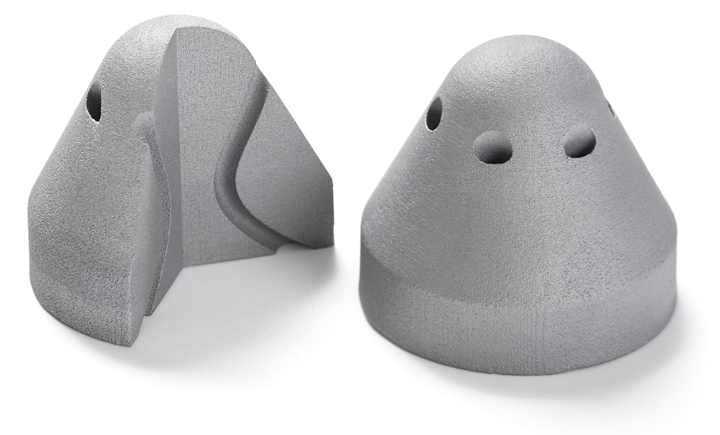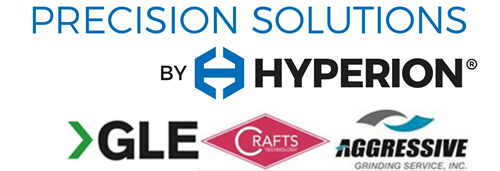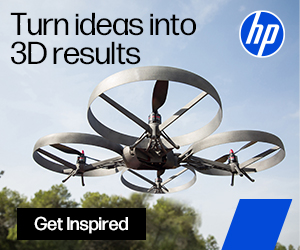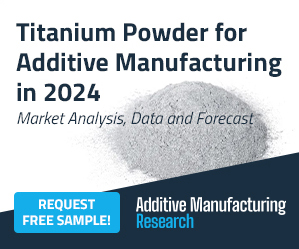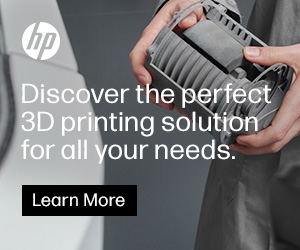Tungsten Carbide as an Emerging Alloy in Additive Manufacturing – AMS Speaker Spotlight
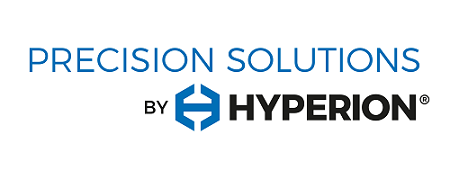
Tungsten Carbide is utilized in a number of industries due to its superior hardness properties compared to tool steel and its superior toughness compared to technical ceramics. With these superior properties in mind, Tungsten Carbide is most commonly associated with tools used in metal cutting applications such as sawing, milling, and turning. Many are surprised to find out Tungsten Carbide is also frequently used in fluid dispensing or flow applications due to its superior life when exposed to erosive wear. The improved wear performance of Tungsten Carbide increases component life in items such as nozzles in industries as diverse as water jet cutting, oil and gas, and electronics. While the benefits of Tungsten Carbide are clear to many engineers designing these components the challenges of fabricating a Tungsten Carbide part are less well known.
To begin, it should be explained that Tungsten Carbide is the name used for a broad category of alloys which are composed of actual Tungsten Carbide along with metallic binders along with other added carbides (ie TiC and TaC). The two most common metallic binders are Cobalt and Nickel. Metallic binders influence properties of hardness, toughness, as well as chemical compatibility. Metallic binder content may vary from 3-20% of the finished material depending on the desired properties.
Ready to Press powder is made by combining Tungsten Carbide (WC) powder, metallic binder, and an organic binder in a solvent and then evaporating the solvent from the mixture using a spray drying process. The powder is then compacted in a press which creates a green part which is roughly the strength of a piece of chalk. Though brittle the green part can be machined using traditional turning, milling and drilling techniques. Care must be taken when calculating geometry as the green part will shrink up to 20% during the sintering process. Additionally, while at temperature during the sinter process (2500-2700oF) as the metallic binder melts the part becomes relatively soft and areas of thin wall thickness may collapse. When removed from the sintering process the part is in its hardened state. Also, due to shrink rates precise features cannot be created during green forming meaning complicated and precise geometric features must be added to the hardened part after sintering.
Unlike a steel component, in its hardened state Tungsten Carbide cannot be conventionally turned, drilled, milled, or welded. Instead, we are left with grinding and EDM processes which are time consuming, expensive, and limited in their ability to create certain geometries.
This is where additive techniques such as binder jetting and FDM can add customer value by creating geometries that were previously impossible in Tungsten Carbide. While challenges exist in creating powder which is suitable to printing vs pressing advances are being made to bring well known additive benefits to the world of hard materials.
One such example is progressive cavity pump rotors (Moineau principle) which have a geometry that would be impossible to form in a green part or grind in a finished part. With additive techniques pump designers have another material in their arsenal when fighting against abrasive wear when pumping challenging liquids.
Another example is creating one piece nozzles or spreaders used in fluid dispensing where curved fluid paths would be preferred. Just a few years ago these geometries would have been thought to be impossible in Tungsten Carbide leaving engineers to choose sub-optimal materials or less efficient geometries both of which leave customers with ongoing maintenance costs.
By partnering with Precision Solutions by Hyperion on complex part geometries customers receive the benefit of Hyperion’s hard material expertise, but also the benefit of state of the art fabrication techniques applied in the right way to deliver previously impossible geometries.
Precision Solutions by Hyperion is participating at Additive Manufacturing Strategies, taking place in New York City from February 7-9, 2023. Paul Wagner, General Manager, Precision Solutions by Hyperion, will be taking part in Session 3, Panel 1: Emerging Alloys and Metallic Materials for AM, on February 7. Register for your ticket to attend here.
Subscribe to Our Email Newsletter
Stay up-to-date on all the latest news from the 3D printing industry and receive information and offers from third party vendors.
Print Services
You May Also Like
Aussie 3D Printing OEM AML3D Expands into UK Defense Market via BAE Systems Deal
The Australian original equipment manufacturer (OEM) of wire additive manufacturing (WAM) systems, AML3D, has made expansion into the US defense market the cornerstone of its business strategy since pivoting a...
Daring AM: 3D Printed Guns Go From Homemade to Heavily Watched
As law enforcement intensifies its efforts and agencies roll out new regulations, 3D printed guns are becoming a bigger part of the ghost gun conversation. In March 2025, the U.S....
Conflux 3D Prints Cooling System for Australia’s Zero-Emission Hydrogen Aircraft
In a major step toward zero-emissions aviation, Australian aircraft manufacturer AMSL Aero is developing one of the most ambitious electric aircraft in the world: Vertiia, a hydrogen-powered vertical takeoff and...
BellaSeno’s 3D Printed Breast Implants Keep Shape with 87% Fat Volume, Avoids Silicone Risks
At a medical conference in Austin this week, a new kind of breast implant took center stage. It is not made from silicone but from a 3D printed, fully resorbable...




